How to Better Prepare for Retirement in Your 50s
No matter how much (or how little) you’ve saved for retirement, you can always take steps to better prepare for your golden years no matter how old you are. Whether you just turned 50 or are in your mid-to-late 50s, here are seven actions you can take to set yourself up well for the years ahead.
Take advantage of catch-up contributions
When you turn 50, the IRS allows you to make annual “catch-up contributions”: additional contributions you can make above standard annual limits to your 401(k)s and IRAs, with the IRS establishing these rules to encourage savings and help ease the financial burden of retirement.
If it makes sense in your overall plan, you should take advantage of this benefit as tax-deferred growth can significantly boost your retirement savings. As of 2025, you can contribute $23,500 to a 401(k) and $16,500 to a SIMPLE 401(k). However, catch-up contributions allow you to kick in an extra $7,500 for a 401(k) and $3,500 for SIMPLE 401(k) accounts. The 2025 contribution limit for Roth and traditional IRAs is $7,000, but catch-up contributions allow you to add an extra $1,000.
Thanks to the passing of the Secure Act 2.0, workers aged 60 to 63 can now boost annual 401(k) catch-up contributions to $11,250 ($5,250 for SIMPLE 401(K) accounts)—giving them the means to save even more for retirement.
Review investment portfolio allocations
Taking on more risk in your investment portfolio might seem tempting—especially since your Social Security benefits or pension may not cover your needs—but it's essential to remember potential downsides. For example, a market crash could put your retirement dreams in peril.
A recent Fidelity report in fact found that 37% of baby boomers have more stock exposure than is advisable. As you approach age 60, though, your investment strategy should typically become more conservative with less invested in stocks (known for their volatility); should a significant and prolonged stock market decline ensue, you might not have the luxury of waiting out a recovery. This can seriously jeopardize your financial stability in retirement, especially if you're unable to withdraw money at the planned rate.
While everyone’s financial circumstances are unique, a general rule of thumb is to subtract your age from 100 (or 110 for a more conservative approach) to determine your stock allocation; the resulting number indicates the percentage of stocks in your portfolio, with the remaining portion comprised of more conservative assets such as bonds and CDs.
Evaluate your long-term care options
While personal situations vary—especially if you have a family history of illness at a young age—experts recommend you obtain a long-term care policy (as a stand-alone product or via your life insurance policy) in your mid-to-late fifties so you can lock in a lower premium.
There are several reasons to do this, primarily that you must qualify for long-term care insurance—meaning you must be healthy to buy coverage. As many people see a slight decline to their health in their 50s, it’s easy to see why 30.4% of long-term care applicants between the ages of 60 and 64 were denied coverage in 2021. This number increases to over 38% for those aged 65–69 and was significantly higher (47.2%) among those age 70+.
Another reason to buy a policy in your 50s? Long-term care premiums are based on the age when you apply. That said, you don’t want to purchase a policy too early since people aged 70+ are responsible for more than 92% of long-term insurance claims. In other words, if you buy a policy in your 40s, you’ll likely pay premiums for more than two decades before actually filing a claim.
If you don’t want to pay for a policy (with the average annual cost for a 55-year-old male ringing in at $2,100 for a policy covering $165,000 in benefits with a 3% growth rate to account for inflation), you’ll need to at least prepare to self-fund long-term care—knowing that if you opt for self-funding, healthcare expenses aren’t cheap.
For example, various websites (e.g., Genworth.com) report national annual median costs are $75,504 for a home health aide, $64,200 for an assisted living facility, and $116,800 for a private nursing home room. With long-term care costs expected to continue to rise, it’s critical to plan in advance.
Consider a health savings account
A health savings account (HSA) is a type of savings account you can use to pay for qualified out-of-pocket healthcare expenses including deductibles and copays. While these are specifically designed to help people with high-deductible health insurance plans (HDHP), they’re sometimes also an excellent way to save for future healthcare expenses as account balances can roll over every year indefinitely. When you turn 55, you can even supplement the account with an extra $1,000 for “catch-up” contributions.
Get started on an estate plan
Estate planning involves creating a blueprint for the preservation, management, and distribution of assets in the event of your death and/or mental incapacitation—and, contrary to popular belief, it’s not just for the wealthy! At the very least, ensure the beneficiaries on your accounts and policies are up to date and that you’ve completed a will and medical directives.
Pay down debt
Carrying too much debt—a constant source of stress for so many retirees—into retirement can place additional strain on any fixed income: forcing you to cut back and adjust the budget you’ve become accustomed to over the years if you fail to get it under control.
One of the smartest moves you can make in this respect is to pay off your mortgage. Given that housing is the biggest monthly expense for retirees overall, you could enjoy some significant savings by paying this off more quickly and thus redirecting your money toward other retirement essentials. One recent Harvard University study reports that nearly half of homeowners aged 65-79 are still paying off a mortgage—so act sooner rather than later in this regard!
Boost your income history for Social Security
Though calculated using a complex formula, Social Security benefits are generally based on your highest 35 years of covered earnings and the age at which you begin receiving benefits—with a maximum monthly payout of $5,108 (in 2025).
If you lack a 35-year work history, your benefit calculation will still include non-work years; Social Security will simply enter a zero for each year with no earnings reported. It’s therefore important to raise your lifetime income average by replacing zero or low-income years with higher incomes until you start collecting; doing so will help maximize the benefit owed to you.
In sum: how to prepare for retirement in your 50s
If you’re like most people, you likely haven’t yet developed a concrete vision of your retirement. Considerations regarding when to retire, where to live, and how to fill all of your newfound free time may still elude you—and that’s fine! However, these details shouldn’t deter you from getting serious about the next chapter of your life; taking the steps mentioned in this article can help.
Want to know if you're on track for retirement? Enlist the help of our "Am I on Track?" service to gain insight into how likely you are to reach your retirement goals and (if applicable) take actionable steps to get you back on track. Schedule a FREE discovery call with one of our CFP® professionals to learn more.
About the author
The content in this post was developed by our team of writers and reviewed by our team of CFP® professionals here at Vision Retirement.
Retirement Planning | Advice | Investment Management
———
Vision Retirement is an independent registered advisor (RIA) firm headquartered in Ridgewood, New Jersey. Launched in 2006 to better help people prepare for retirement and feel more confident in their decision-making, our firm’s mission is to provide clients with clarity and guidance so they can enjoy a comfortable and stress-free retirement. To schedule a no-obligation consultation with one of our financial advisors, please click here.
Disclosures
This document is a summary only and is not intended to provide specific advice or recommendations for any individual or business.




